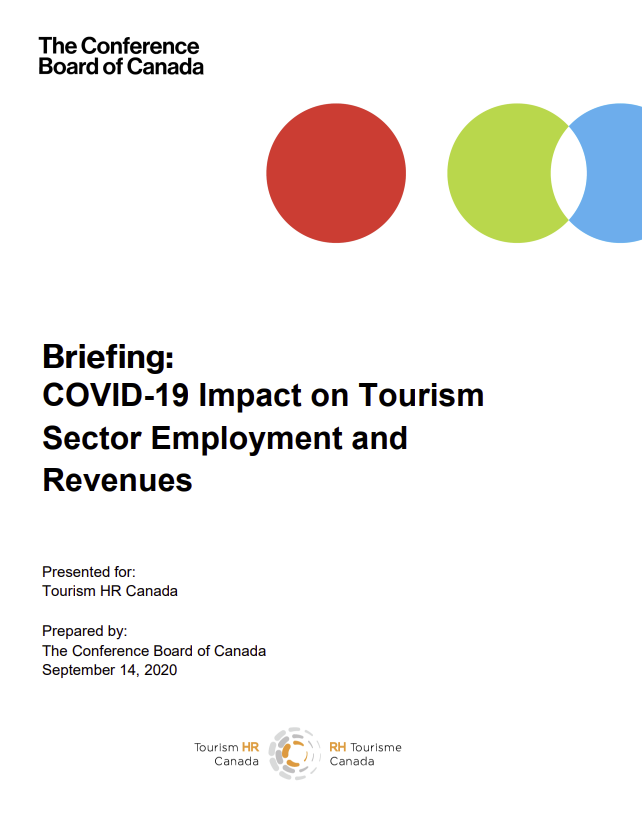When COVID-19 struck Canada’s tourism sector, tourist activity plunged to unimagined levels. During the summer of 2020, the highest weekly average occupancy rate for hotels in Canada only reached 42.9%[1]. Passengers on major Canadian airlines for the month of June reached 440,000, which was 6.7 million fewer passengers than the same month a year prior[2]. And with the border closed, the number of tourists coming to Canada collapsed from millions of individuals per month in the summer of 2019, to 67,787 in July 2020[3].
Tourism HR Canada wanted to understand the impact this would have on employment, considering not only demand from tourists, but also the local spending component. To do this, we worked with the Conference Board of Canada to adapt its tourism labour supply and demand model to project tourism employment levels to 2025, with quarterly employment estimates for 2020 and 2021. The resulting report, COVID-19 Impact on Tourism Sector Employment and Revenues, details the findings

[1] STR: Canada hotel results for week ending 22 August, https://str.com/press-release/str-canada-hotel-results-week-ending-22-august
[2] Statistics Canada. Table 23-10-0079-01 Operating and financial statistics for major Canadian airlines, monthly
[3] Statistics Canada. Table 24-10-0043-01 International tourists entering or returning to Canada, by province of entry
